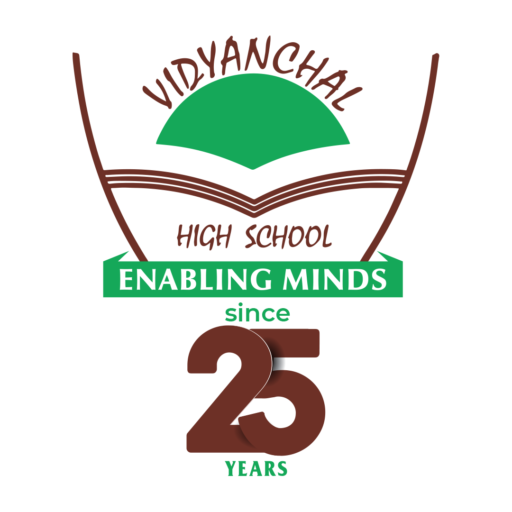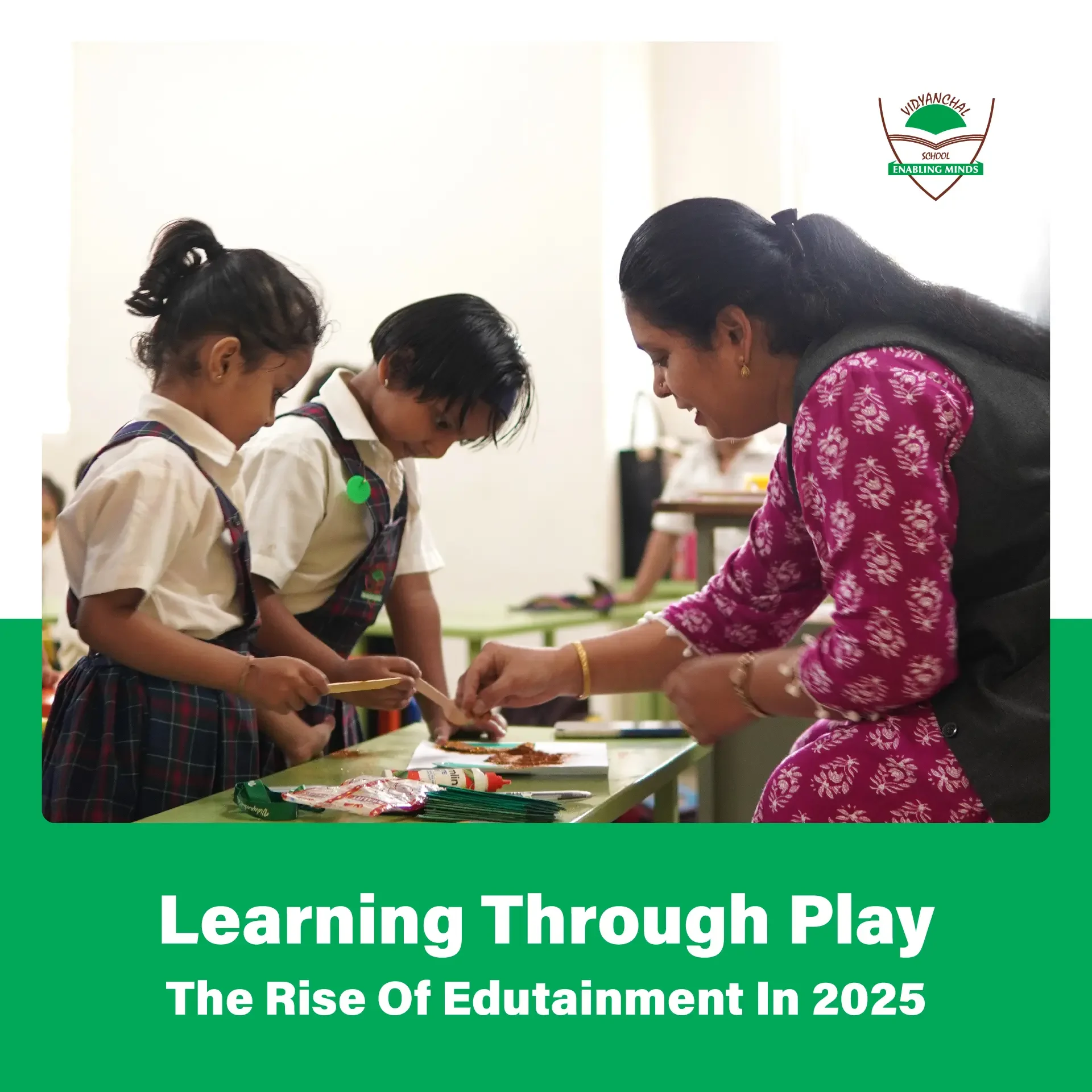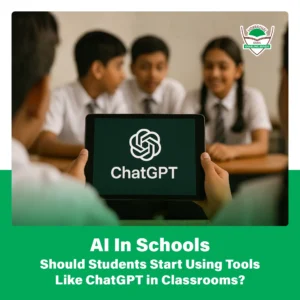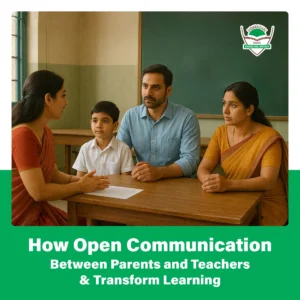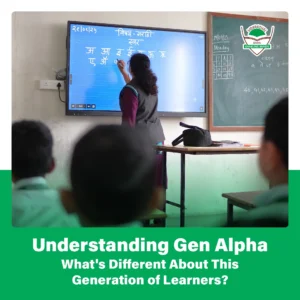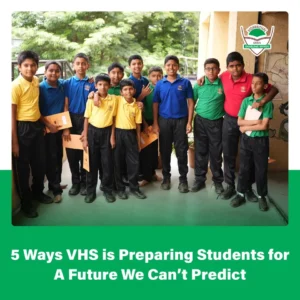In a world where attention spans are shrinking and digital content is growing exponentially, education is undergoing a transformation—play is no longer a break from learning; it’s part of the learning itself.
Welcome to the age of edutainment—where education meets entertainment in meaningful, curriculum-aligned, and skill-driven ways. In 2025, this isn’t just a trend; it’s a pedagogical shift. And progressive schools like Vidyanchal High School (VHS) in Pune are at the forefront of this movement.
What is Edutainment?
Edutainment blends education with entertainment—through games, simulations, storytelling, interactive videos, sports-based challenges, and arts-infused activities. While it once referred to educational cartoons or TV shows, today’s edutainment encompasses digital apps, physical play, and even classroom role-play or gamified assignments.
In other words: “Play isn’t the opposite of learning; it’s how children learn best.”
The Global Shift Toward Edutainment
According to a 2024 report by HolonIQ, the global edtech and edutainment market is projected to hit $410 billion by 2025. Closer to home, a KPMG India survey noted that 67% of Indian educators believe that gamified and experiential content increases student engagement and retention.
A UNICEF-backed study in India revealed that students who engaged with play-based learning environments scored 23% higher in problem-solving and showed better emotional resilience than their peers in traditional classrooms.
Why Edutainment Works – The Science Behind It
Here’s what makes edutainment effective:
- Neuroplasticity & Engagement: Learning through games activates dopamine pathways, making retention easier and motivation higher.
- Active, Not Passive Learning: Edutainment makes students interact with content—through questioning, moving, imagining, or experimenting.
- Multi-sensory Learning: Combining visuals, movement, sound, and storytelling improves comprehension across different learner types.
- Safe Space to Fail and Try Again: Unlike one-shot exams, games and playful simulations encourage exploration and resilience.
Vidyanchal’s Approach: Serious About Play
At Vidyanchal High School, the concept of edutainment isn’t a buzzword—it’s embedded in the daily design of learning.
1. Integrated Learning through Arts and Theatre
Whether it’s performing a Marathi play based on a historical event or using visual arts to explore geometry, VHS ensures that creativity becomes a pathway to academic understanding. This also reinforces the NEP 2020’s emphasis on art-integrated education.
“Students remember what they perform or create, not what they memorise. Art becomes memory,” shares a senior VHS faculty member.
2. Sports-Based Learning & Life Skills
Unlike schools where sports are an afterthought, VHS treats physical activity as a fundamental part of education. From team sports that build collaboration and strategy, to skating and football that improve discipline and fitness—every movement contributes to mental agility.
This supports findings from the ICSSPE, which reports that students participating in structured sports are 30% more likely to demonstrate leadership traits and resilience.
3. EdTech + Edutainment
The school leverages curated digital tools—coding puzzles, science experiments through simulations, and adaptive learning platforms—where the screen time isn’t passive but participative. During the COVID-19 years, VHS’s blend of digital interactivity with traditional methods was critical in keeping students engaged.
Learning Outcomes Backed by Data
Vidyanchal has seen direct benefits of this holistic and playful approach:
- Students engaging with activity-based lessons showed 15–20% higher concept retention over a semester.
- Participation in arts and public speaking events improved confidence and fluency scores by 38%, based on internal assessments.
- Sports-integrated learning has shown to reduce stress markers and increase attendance, especially in middle school grades.
These numbers reflect a philosophy seen in many of VHS’s initiatives, as shared in their blog on redefining post-pandemic classrooms.
Edutainment: For All Ages
While often associated with early childhood education, edutainment is just as effective for adolescents. Middle and high school students benefit from simulations, debates, escape-room-style problem-solving in math, or even mock parliaments in social science.
In one unit on environmental studies, VHS students designed digital storyboards of how Pune would look in 2050 based on climate choices—a creative task that made theoretical content personally meaningful.
Bridging the Parent–Teacher–Student Triangle
A significant aspect of making edutainment work is communication. At VHS, transparent and collaborative dialogue between parents, students, and teachers ensures alignment. In this detailed post, the school explores how open communication enhances trust and helps tailor learning to each child’s unique needs—even when the approach is unconventional.
Parents aren’t just informed about project days or drama performances—they’re part of the process, through orientation sessions, WhatsApp-based class groups, and feedback loops.
Does Edutainment Replace Traditional Learning?
Not at all. It complements it. At VHS, students still build a strong academic foundation. The difference is that now they:
- Discover math through puzzle competitions.
- Explore science by building circuits or experimenting with real-world problems.
- Learn languages through storytelling, poetry jams, and debates.
Structured curriculum continues—but is experienced in a way that students want to come back to class the next day.
The Road Ahead: Edutainment as Policy
India’s NEP 2020 clearly supports experiential and joyful learning, and CBSE’s competency-based assessments now prioritise application over rote. Progressive schools like VHS are already aligned with this direction.
In the next 5 years, expect to see:
- Increased AI-personalised gamified learning paths
- Cross-subject theme weeks (like combining biology and drama)
- Outdoor classrooms for interdisciplinary exploration
- Student-led exhibitions and learning fairs
Final Thoughts
Education in 2025 isn’t about choosing between learning and fun. It’s about realising that the two are inseparable. With its thoughtful blend of academic excellence, physical growth, creative freedom, and strong family-school partnerships, Vidyanchal High School represents what 21st-century learning should look like.
In a world preparing children for jobs, challenges, and technologies we can’t yet predict, one thing is certain: learning through play isn’t child’s pla—it’s serious preparation for life.
